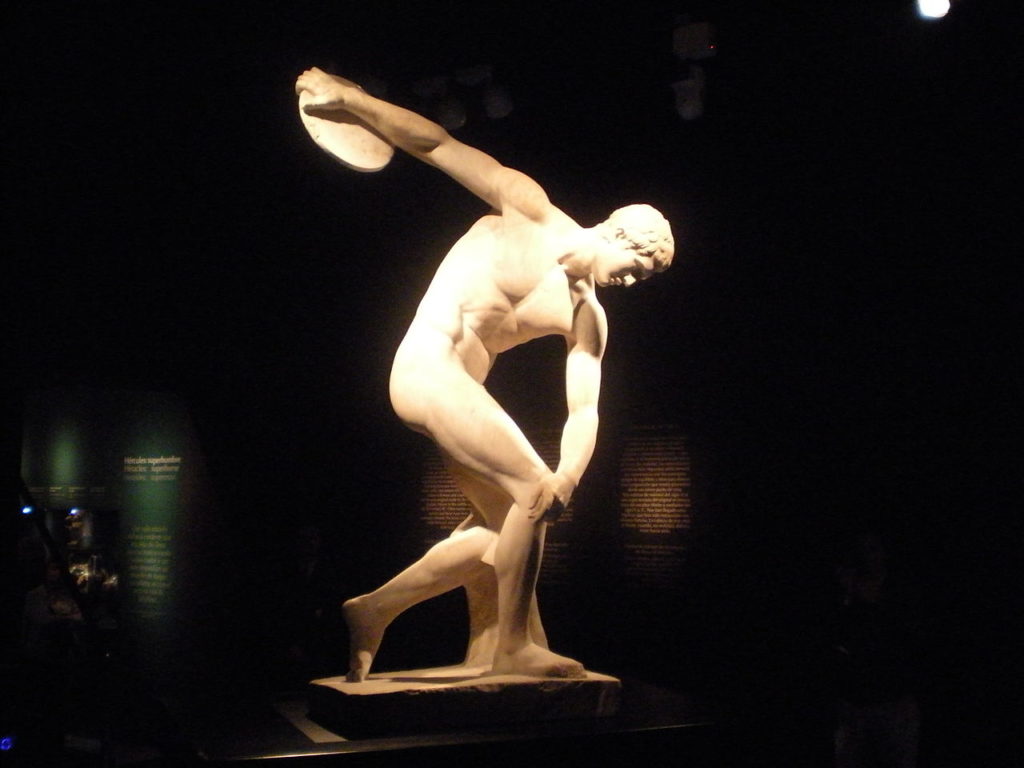
One wonders why so many ancient Greek statues are nude, whether they depict deities, athletes, brave warriors, or mere everyday folks.
Ancient Greeks believed that the human body form—and especially the male body—should be portrayed in an ideal way. The Greek nude statues also appear to be mostly young, ageless, and approaching perfection in form.
Greeks celebrated humanity and the human form by giving their gods human features and traits. Thus, the nudity of the majority of Ancient Greek statues maximizes the beauty of humans in general.
Modern man might mistakenly assume that nudity in Ancient Greek society was the norm. Therefore art, whether it was statues or paintings in amphorae, was a simple depiction of that state of undress in everyday life.
However, that was not the case. Public nudity was not the standard. It was confined to gymnasiums and public baths, which were also gender specific.
The word gymnasium here is key. Along with gymnastics, the words are based on the Greek adjective gymnos which means nude. So it was natural at the time for athletes in gymnasiums to exercise with no clothes or wear a simple loincloth. The same applies to games and competitions of the time.
Olympian Nude Statues
The naked Olympics started in the 8th century BC and became an integral part of ancient Greek life. Historical accounts show that for many decades athletes competed naked.
The games started in Olympia in today’s Peloponnese and were dedicated to the Greek god, Zeus. Athletes were to display their muscles and physical prowess.
But the impeccable physique and show of strength were not limited to impressing Zeus. It was also meant to intimidate competitors. A powerful, muscular body along with a victory was a way to earn respect in society as well.
The tradition of naked competition is reported to have started in 720 B.C. According to the philosopher Plato, Homer’s Iliad, and several graphic paintings all show that it was common for male track and field athletes to compete naked. Participants were running, long-jumping, and wrestling completely in the nude.
According to ancient legend, before 720 BC, athletes wore loincloths. But it was runner Orsippos of Megara who saw his loincloth falling off and continued the race naked.
He finished the race first and was also the first athlete who won the two hundred meter game in the nude. Not to be outdone, the other competitors copied him, starting a long tradition of runners competing naked.
Heroic Nudity
Many ancient Greek statues show heroic figures, semi-gods, and gods in the nude. This may be an unrealistic nudity, yet it was an integral part of Greek art more than two millennia ago.
This convention began in Archaic and Classical Greece and continued in the Hellenistic and Roman periods. The battle heroes are carved in kouros figures, and some deities appear nude. The bodies of the mortals were always young and athletic, and we never see an old man.
According to Nigel Spivey in his book Understanding Greek Sculpture, a warrior’s character is presented more accurately “without the disguise or added context of clothing.”
Female Nude Statues
While male nudity in sculpture dominated until the 4th century B.C., figures of the goddess of beauty, Aphrodite, eventually began appearing and introduced female nudity into ancient Greek art.
Before then, Greek female nude statues were very few, except when they were depicting women in captivity, submission, or servants.
The belief in ancient Greek society was that women were created secondary to men and society was restrictive toward women. The nude statue of a woman that broke the mold was the Aphrodite of Knidos, a sculpture of the goddess Aphrodite created by Praxiteles of Athens around the 4th century B.C..
It was one of the first representations of the nude female form in Greek history. It was a life-sized nude statue and the answer to male heroic nudity. Goddess Aphrodite was shown naked, reaching for a bath towel while covering her pubis. Her breasts are left exposed.
Until the creation of Aphrodite of Knidos, Greek sculpture had been dominated by male nude statues. The original Greek sculpture of Aphrodite has disappeared.
See all the latest news from Greece and the world at Greekreporter.com. Contact our newsroom to report an update or send your story, photos and videos. Follow GR on Google News and subscribe here to our daily email!



